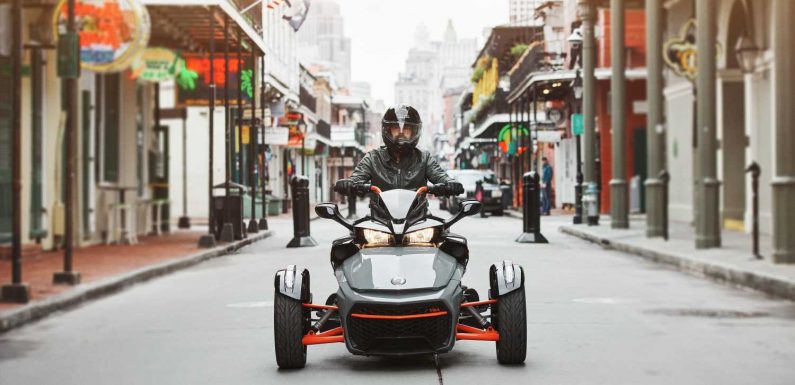
Throughout history, humans have relied on music to carry stories and bring people together. So Rolling Stone and Can-Am are embarking on a road trip to spotlight the artists, venues, and recording studios keeping the storytelling legacy alive today. We’re calling the project Common Tread. Join us as we explore the people and places that bridge the divide between music’s past and future.
In 2006, Andrew Campanelli was so impressed with a performance by the band Galactic that he signed up for a drum clinic at Tipitina’s. There he met guitar player Zack Feinberg, and shortly after, Feinberg was out for a bike ride when he heard Ohio transplant David Shaw playing guitar and singing on his front porch. That’s how the Revivalists began.
Related Stories
The Hidden Recording Studios of Woodstock, NY
How 22-Year-Old Christone Ingram Is Making the Delta Blues New Again
Related Stories
Xmas or Bust: The Untold Story of 'National Lampoon's Christmas Vacation'
25 Essential Prince Songs
Originally the threesome called itself 12 Camp Finn Shaw, but the name didn’t stick — in part because the band kept growing. George Gekas joined, then Ed Williams, Michael Girardot, and Rob Ingraham. More recently, PJ Howard came on as the band’s second drummer.
Of the eight members of the Revivalists, not one was born in New Orleans. They came from all over the country — New York, California, Texas, Tennessee. They were independently drawn in by The Big Easy’s creative energy. “One of the reasons a lot of us were attracted to New Orleans is that we knew there was this nurturing environment for live music,” says Feinberg. “There are tons of music venues, and it’s not hard to get up and play if you want to.”
New Orleans is best known as the birthplace of jazz, but it’s also a formative hub for funk, rhythm and blues, and marching bands. In the ’90s it produced alt-rock bands like Cowboy Mouth and Better than Ezra along with rap labels Cash Money Records and No Limit Records. The city is generally credited as the birthplace of bounce, and the artistic outflow goes beyond just music.
“There’s this huge public art culture in New Orleans where you just do things for the sake of doing them,” says Feinberg. “Like, you’re going to spend all year making your Mardi Gras costume or float, and it’s just for the sake of doing it. That’s the joie de vivre,” he says, referring to the carefree sensibility that fosters creative liberation in New Orleans.
Joie de vivre might also help explain why the city was so kind to the Revivalists when they were just starting out 15 years ago. “One thing that makes the New Orleans scene so great is this sense of stewardship,” says Ingraham. “There’s a passing of the torch to cultivate the next generation, so bands like us get a lot of mentoring.”
Among its influences, the Revivalists count legendary New Orleans acts Galactic, Dumpstaphunk, Papa Grows Funk, and Rebirth Brass Band — groups notorious for hyping their audiences. “What ties everything in, whether it be bounce music, metal, trad jazz, or all the New Orleans hip hop and rap, is the live energy,” says Girardot. “If you’re a band here, you have to know how to get the crowd energized.”
In 2015, the Revivalists broke nationally with the album Men Amongst Mountains, which contained the platinum single, “Wish I Knew You.” And they followed that success with the 2018 album Take Good Care, and last year’s stripped-down EP, Made in Muscle Shoals.
It was a long road to break-out success, and it might not have happened had the band formed anywhere else. “New Orleans was a great incubator for us,” says Shaw. “It allowed us to develop our craft, and once we were ready, the stars aligned.”
DRIVING NOTES
With its steampunk anatomy and orange trim, the Spyder F3-S Special Series drew ogles from the sidewalk even in the famously eccentric French Quarter. (A group of teenagers even demanded to take pictures with it.) And while the three-wheel machine proved nimble enough to slice quickly through New Orleans’ narrow downtown streets, it revealed a cache of serious brawn on the scenic byways outside the city. Surrounded by marsh and gulf waters, I flipped the engine into “sport mode” to loosen up the stability features and let the power take over. I felt a thrill as the rear wheel began to drift, but thanks to the F-3’s exceptionally low center of gravity, I still felt confident pushing it in tight corners.
Check out more Common Tread episodes
Source: Read Full Article
